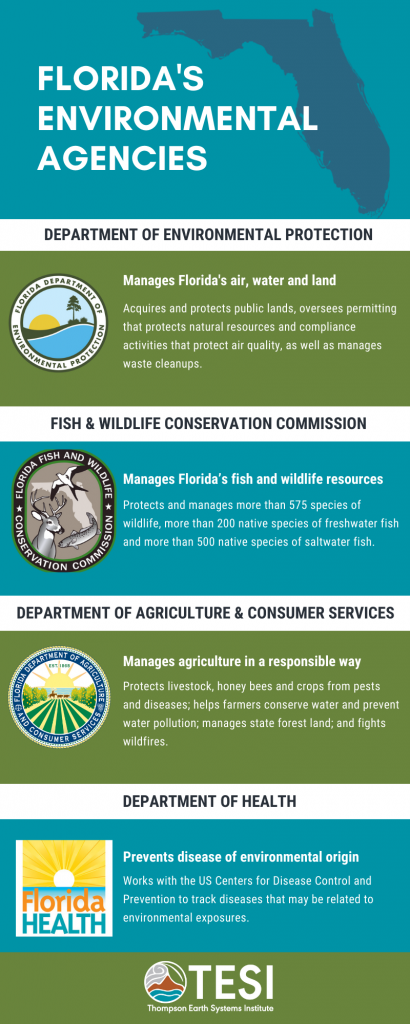
Editor’s note: Hannah Brown, a science policy fellow with the National Academies, contributed to this post.
Florida is a large state with a wide variety of natural resources, fish and wildlife, and a thriving agriculture industry. Managing our environment in a way that is harmonious with the state’s more than 21 million people can be challenging.
Four main state agencies, along with the federal government are responsible for taking on this challenge. But, navigating the complexity of each agency can be confusing.
We’ve broken it down for you so you can familiarize yourself with what each agency is responsible for, and how they can help you. It is important to note that this post is by no means exhaustive, and multiple federal agencies and nonprofits are also highly involved in managing our natural resources.
Click on the links below to learn about each of these agencies:
Florida Department of Environmental Protection
Acquires and protects public lands, oversees permitting that protects natural resources and compliance activities that protect air quality, as well as manages...
Florida Fish and Wildlife Conservation Commission
Protects and manages more than 575 species of wildlife, more than 200 native species of freshwater fish and more than 500 native species of saltwater fish.
Florida Department of Agriculture and Consumer Services
Protects livestock, honey bees and crops from pests and diseases; helps farmers conserve water and prevent water pollution; manages state forest land; and...
Florida Department of Health
Works with the US Centers for Disease Control and Prevention to track diseases that may be related to environmental exposures.
Make your voice heard.
These agencies function at their best when the public is involved. To have a direct impact on how Florida’s environmental resources are managed, make your voice heard by attending public meetings and representing the interests of yourself and your community.